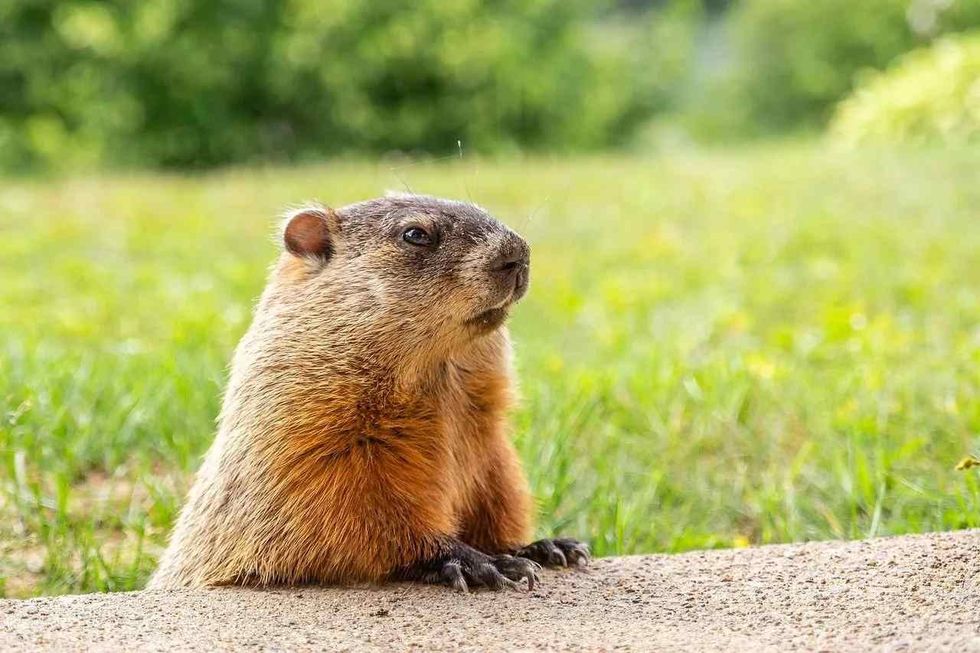Groundhogs (Marmota monax) are a large rodent species belonging to the Sciuridae family of squirrels and are related to chipmunks and marmots.
You may find these small mammals attacking the vegetable patch in a garden during the spring and summer months. Though they may seem like pests, they are critical to the food chain, as they help eliminate insects that we consider as nuisances.
Having one or two of them in a garden may not seem like a problem but can become a cause for concern if these animals start to dig deeper and destroy electrical wiring and plumbing. This is when a person should start planning to get rid of them by calling pest control. Groundhogs mostly find their food aboveground.
However, they dig their burrows underground. Are you interested in learning more about this great wildlife species? Read on to find out!
The Eating Pattern Of Groundhogs
The diet and nutritional habits of groundhogs tend to change along with the season. Their eating patterns and feeding time also change to align with the movement of the Sun and weather conditions.
During the warm months, in spring and summer, these animals will forage for food plants just as the Sun rises, focusing their attention on greens and berries. They enjoy eating blackberries, mulberries, hackberries, and maple leaves.
These creatures may also be seen feeding on smaller insects like snails, beetles, and grasshoppers during the day. However, these only make up a small percentage of their summertime diet. Their preferred times for feeding are during the morning and evening.
Most of the foliage groundhogs feed on during the fall season will turn brown and wither away. They will begin to feed on small portions of tree bark and branches, as well as any insects or grubs they find living underneath the bark.
Once most of the forest turns to orange, they will focus on a more animal-based diet, including eggs, small birds, and bugs.
This is because an animal-based diet contains more protein and fat, which will help these animals to keep warm and healthy for the upcoming winter season. They will also build up a food store in their burrows and dens to rely on during the winter when there is not much food available.
With the onset of the long winter months, groundhogs will settle in to hibernate, only waking up occasionally to feed. They decrease the number of times they feed drastically and change their habits in order to preserve their energy, which will help them keep warm.
What do groundhogs drink?
Unlike other animals, groundhogs typically do not drink water. They receive all their hydration from consuming raindrops or dewdrops on leaves, or through the natural juices of fruits, vegetables, and other plants.
It is unlikely to see these rodents drinking water from natural water sources like ponds, lakes, or rivers like other animals. They get their entire water supply from the various foods in their diet.
Types Of Food That Groundhogs Eat
Groundhogs are omnivorous in nature, meaning that they eat a wide range of foods including naturally found fruits and vegetables as well as small birds and bugs. Though they are mostly seen feeding on plant material, they are often mistaken as herbivores in nature.
These rodents are mostly found eating plants or crops from fields, such as lettuce, peas, broccoli, corn, carrots, soybeans, and squash. Groundhogs eat fruit like blackberries, mulberries, cherries, raspberries, and apples as well! In terms of wild plants, groundhogs like to eat dandelions, alfalfa, clovers, maple leaves, and many other weeds and flowering plants.
Though they are herbivores for most of the year, they begin to include more animal-based foods in their diet once fall sets in, for the extra fat and protein. They can be found feeding on bird eggs, birds, grasshoppers, crickets, beetles, snails, slugs, and other grubs and tiny animals.
Did You Know...
Groundhogs actually belong to the squirrel family, and are its largest species! These rodents are actually just large squirrels. They are also known as whistle pigs or woodchucks.
They may be considered pests as they unwittingly chip away at the foundations of homes and buildings and destroy underwater pipes and wiring while burrowing into the soil to create their summer and winter burrows. If you find too many of them in or near your yard, it may be time to call pest control.
They build different types of housing for different seasons, having summer dens and winter dens. They store their reserve stash of food in their winter dens, which they consume during their period of hibernation.
They hibernate for quite a while, entering a deep sleep-like state in October, and only emerging from their burrows in early spring once the temperatures start rising.
Even though they are not exactly friendly, they are not aggressive either, making it easy for humans and woodchucks to live together in peace.
The mating season begins immediately after they emerge from hibernation, and one female woodchuck can give birth to two to four babies at a time! These babies stay with their mothers for around two months before they leave to live their own lives.
Groundhogs are not usually found in groups, preferring to live solitary lives. However, if one of them sees a predator, it will warn the others near it by using a variety of high-pitched trials.
You can recognize woodchuck damage in your garden by finding mounds of soil, indicating the presence of a burrow. Other signs are teeth marks on the lower trunks of trees, dried out and hollow crops, and deep holes in your lawn.
A groundhog's burrow may cause structural damage, so it is very important to search for burrows and call pest control if you suspect there are many of them on your property.
Groundhogs actually helped to unearth a very important archaeological site in Ohio! The digging and activities of groundhogs on the site helped archeologists uncover many interesting artifacts.









